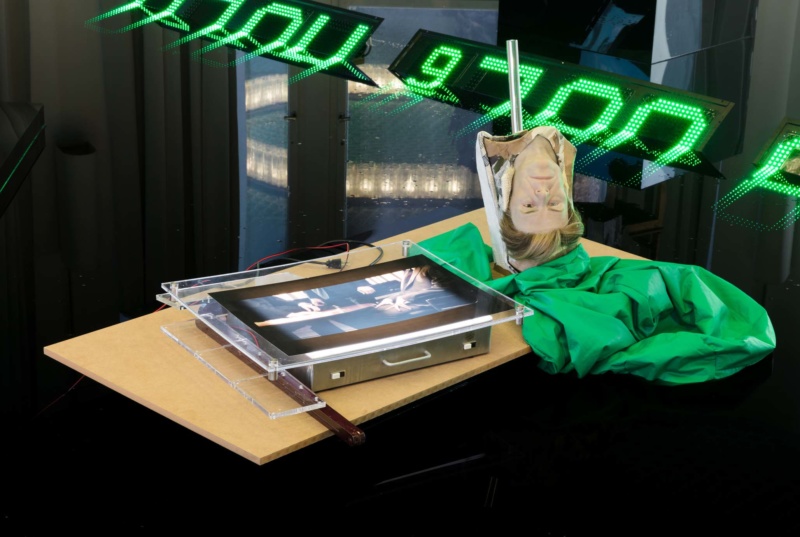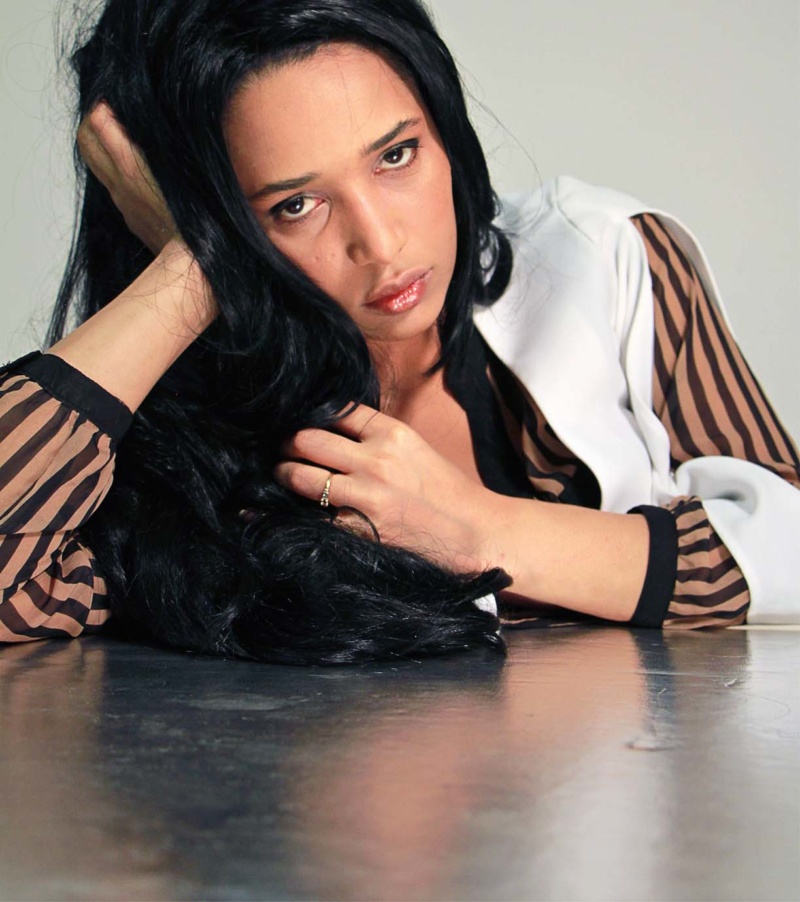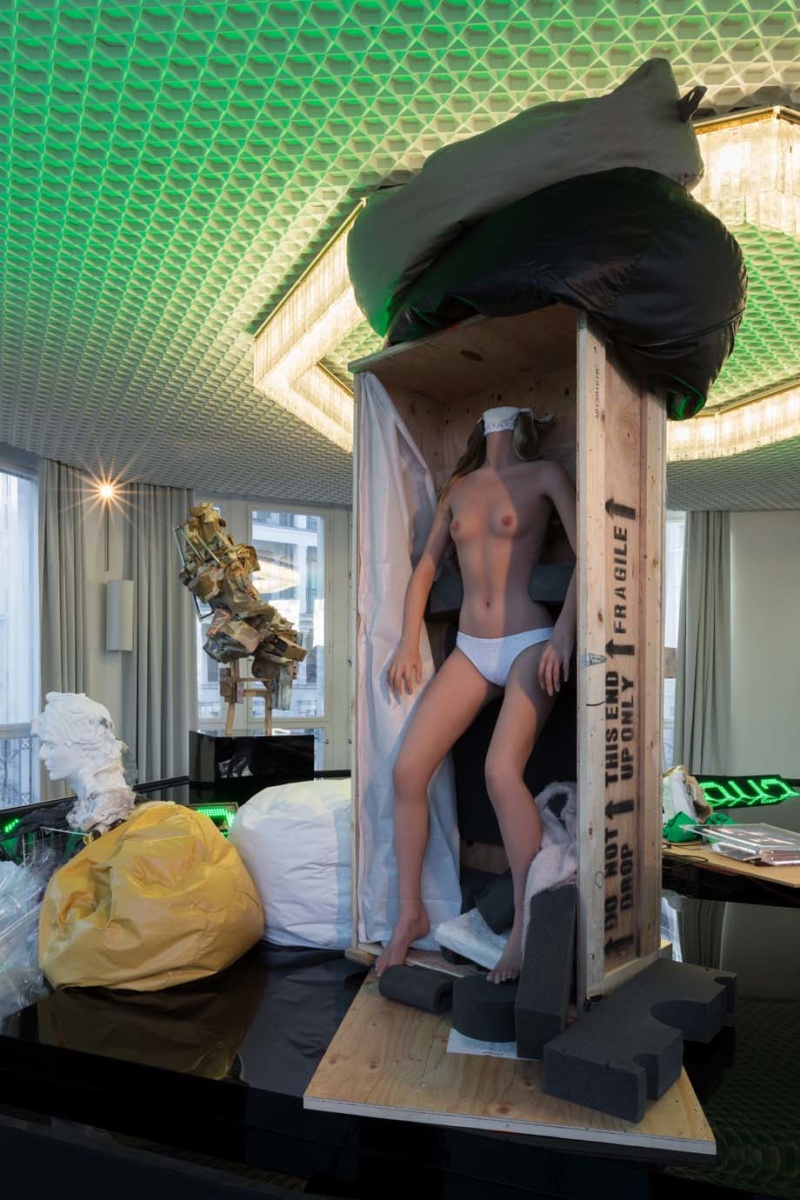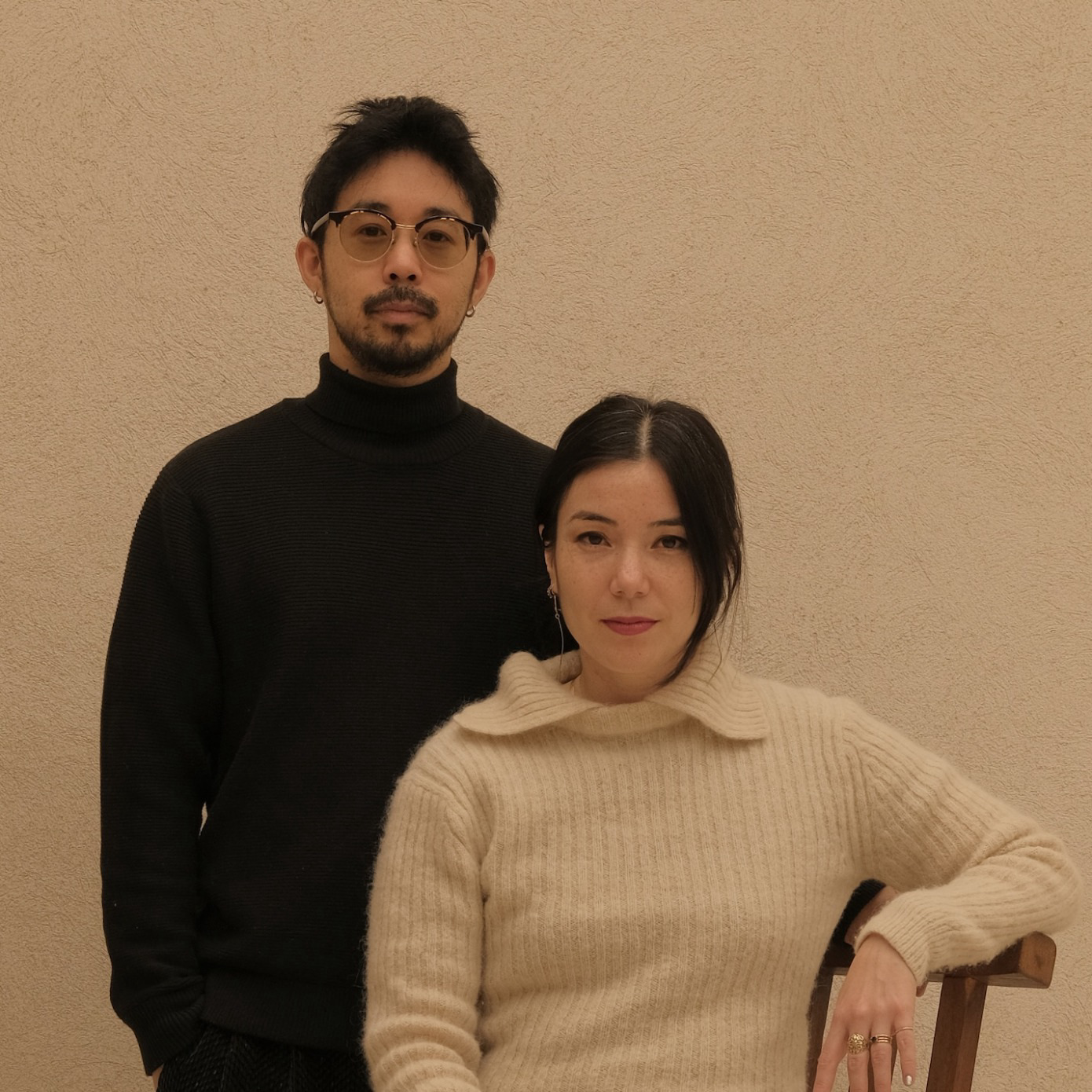
Dear Danica, I went to see your exhibition, “Advanced Pair Bonding,” at the Schinkel Pavillon here in Berlin before the severity of the pandemic settled in, and I have spent a lot of time since considering it deeply. I emailed you some questions hoping, through your responses, to distill some language around your work, enough that I might be able to write something I could send to my editor, enough that we could piece together something that could hint at the deep visual and theoretical complexity that your work exists within. As the virus deepened its hold on reality and my family moved inward, your answers, your candor and your ability to wind language around in the same way that your sculptures swallow various erratic materials, became a comfort for me—an escape through material, through words. The works started to ring within me in a way that I did not expect, in a way that felt muddy, whole, heavy and made me very grateful to you. Unsure of how to approach art writing now, in a very new, kind of uncertain Now, I thought the most appropriate way to address you (and your work) would be epistolary, as addressing you and the current moment simultaneously felt disjointed and callous in any other format.
In an eight-sided plywood basin filled with what appears to be inky black water, your sculptures rest on black plexiglass pedestals. Sunken within the basin, a large green, almost stadium-ready digital clock, nearly halfway submerged at an angle, reflecting and distorting itself. The basin pushes inward the iconic architecture of the Schinkel Pavillon, occupying the floor as a reflexive, barely moving body.
Built in 1969 by Richard Paulick, the Schinkel Pavillon is a self-described “eccentric monument of DDR architecture”; this felt relevant to say aloud as its nature, its shape, its relationship to the number eight all foster an iconic visual resonance that works itself into any exhibition held within, yet, in your presentation, you flow (pun intended) with and within the eight-sided icon. The hallmarks of Schinkel’s octagonal space—its floor-to- ceiling windows, its eight-sided chandelier, its repeating octagonal ceiling plaster and ticker- tape black with white inlaid stone floor—are all inverted by your basin, which demands an interrupted reflection. The sides of the space go on within and around the basin.
Writing to me, you explain that your beloved David Bowie, whose presence vibrates throughout the exhibition and your work in general, was wound up with the number eight. For one, he was born on the 8th of January in 1947 and passed on the 10th of January in 2016 and so, unsurprisingly, January is when your exhibition opened. As someone also born in January, I love the squareness of it. No matter the weather, January is the height of winter (my partner is Australian and finds this absurd, as January to her is the height of summer, but both are heights so we are both right).

The water, as you note in the press release, is sensual but simultaneously black, as in closed and hyper-reflexive, within itself and also outside of itself. I see this black as a demand that the dark, or the unknown when it comes to relation (relating with another human being), is a wonderful thing—that when one steps into a space of uncertainty, of depth, of distance, one might arrive at something new and exciting with someone else: a new way to exist together.
Standing a step up on the windowsill amplifies the intensity of the inky basin; it proves a kind of formal nothingness. What to call this thing, I wonder to myself; a basin feels right enough, as support turns out to be a far more slippery word. Meanwhile, amongst or at the center of it all, the neon green from the clock flickers, sending diffused slime green light high into the plaster repeat of the pavilion’s ceiling and backwards into the basin (echoing). If I look up, the deep, piney forest greens of the trees of our now balmy Berlin winter slide in and out of the clock’s reflected green. You might not be pulling the outside in, but rather acknowledging that the outside is already here, and so is the inside, and consequently these categories have lost some of their use; one always flows into the other.
Standing across from For Mendelssohn on the Object of Skinning, with Saturn’s Dearhorn Attached (2020), I realize that some of your sculptures, because of their reflection within the basin, have a twin, wedded to their feet (base) like a shadow. The bladder that is also a beanbag, full and soaking, becomes many things when it is reflected in the water amoeba (organism, organ).
Anima of a Relationship (2020) revealed itself to me first materially, and then substantively after speaking to you. The materials: silicone sex doll, wooden shipping crate, beanbag chair, packing foam, plastic foil, synthetic sweater, cotton batting cushion, deconstructed slipper, synthetic wig, upholstery needles, white panties, paper, cushions, metal rod, rope, leather belt, plastic shipping crate, clay, acrylic paint, shower curtain. Black thick foam that appears to have held the doll in place still keeps part of the body inside the shipping crate while other foam, pulled off the doll’s body to open the crate, is meticulously placed next to the doll’s left foot. The doll’s right foot, meanwhile, has slid outside of the crate, French tips slightly chipped. Instead of a head, what appears to be shearling covers the doll’s neck hole. Beanbags, plastic foil and other materials rest between the doll and a bust that looks almost as though it has just been unwrapped from the black plastic on which it sits. Looking at these two figures, I cannot help but consider how I’ve always found intimacy as a form of projection and a form of leaping, and how in the act of intimacy we assume a great deal about who we are intimate with, and often that assumption is merely a reflection of ourselves. Later you explain Anima’s particular relationship to projection: how projection, specifically feminized projection (projecting onto women), creates a trap that is replicated and perpetuated, and that you are not a stranger to such projection.

All of this has me thinking about a writer you mentioned to me, Victoria Nelson. You paraphrase: “the concept of a ‘doll,’ a ‘puppet’ or even a statue of the human form, are all considered as a figure imbued with meaning... something intended to be projected upon by the maker or beholder, again and again... a projected significance... which in some cases may even be holy.” Holding this icon/projection- based understanding in one hand, you also note Nelson’s clear summary of the Greco-Roman sacred grotto, drawing the line between the physical grotto (and its wall depictions) and the familiar philosophical understanding of Plato’s Cave. It strikes me that the ties between your work and Nelson’s historical inquiry are both enmeshed with this etymological understanding of the grotesque and, as Nelson writes, with the “Presocratic Greek [philosophical tradition] of seeking wisdom in the darkness, not the light via dream incubation. Initiates who slept in these sacred places journeyed to the realm of the dead in hope of meeting a divinity who would become their friend and mentor.” I couldn’t help but see this synchronicity here, how you’ve described David Bowie as a phantasm (an illusion, apparition, ghost) and how you explained to me the grotto/cave in relation to Otto’s philosophical idea of the Numinous (the feelings when one bears witness to a “supernatural” occurrence). You said: “It’s all about the expansive richness of that sensation, the fear, the chill—the sensation of being made small and humbled by something so striking that all the rational world, and its mundane hum-drum, cannot even begin to explain.” The unknown expands the self. Key, you note, to the Nimbus and far different from the sublime, is that the experience pushes the feeler (the viewer) away from the quotidian and towards something more. The Nimbus (if I understand it correctly) is a great shift, a reorientation, complete and total.
You tied together D.H. Lawrence, Thomas Hardy, Sigmund Freud, Carl Jung and Arthur Schnitzler like this, explaining how language from the 19th century brink-o-modernity resonates for you: “these areas have so much to do with the tracing of the cause-and-effect of human interplay, both within and outside of the body/individual, and extending outwards, into human interpersonal dynamics”—you go on—“in the case of Jungian Psychology, because it attempts to move beyond and transcends the tangible... the purely earth-bound constraints of everyday life.” To me, this act of attempting is akin to the act of tracing, as it brings and joins together the outward movement. You said: “I like to observe the cause-and-effect interplay of our own human biological system, whether regarding motion and ‘mechanics’ of our physical form—namely the cause-and- effect of our anatomy and kinesiology—or the cause-and-effect mechanism of our thoughts, extending outwards, outwards into actions, outwards into the interpersonal world at large.”
Outwards and then inward again. You tie together your 2018 novel, Spondere, and the direct relationship between interplay (inside) and outerplay (outside). In Spondere, it is the internal play between the characters—the way the plot and its causes and effects run through their lives—that extends outward into the human expressions within your sculptures. The movement between the touch implicit in your hand-molded clay portraits. And, the amazing part is that the shift occurs right within the sculpture itself: the outerplay, the anatomical form, the simple fact that the sculptural can be seen, has a box, must be physically moved and so on, the work implies and embodies the shift simultaneously.

With all these ideas of insides and outsides floating around my brain, I return to Anér-gunē Aeolis (2020), named after the origins of the phrasing for husband and wife. You reveal the underscoring of an androgynous being, and how you’d been envisioning depicting David Bowie as female. It is in this action where you note something I find implicit in love generally. “The beloved (in this case David) is loved for himself, his singular selfhood, irrespective of age or gender and regardless of whether I myself (in the more traditionally masculine role of ‘the pursuer’) can even reach the perspective beloved.”
I think about this often in my quarantine, about how to love someone. Now that we are alone together, the prescribed ideals of love seem somehow stronger. What I mean by this is that in these acts of loving unconditionally we must allow our imaginations to remain flexible so that our beloved (a person, the planet, an ideal, an object) might fully embody their whole selves. Otherwise we might go crazy waiting for our love to conform. Later, you’ll mention that this is a form of hyper romanticism. “Hyper” as in over, beyond. There’s that link again to the Greco-Roman, but this time with a different colored thread, tied explicitly to your interest in celebrity (as culture and otherwise). Celebrity demands a particular belief about scale, about the largeness of a person. I was not surprised, as I thought more on celebrity as a kind of ball bouncing through your sculptures, that the shifts of scale remain endless: they form and reform with each step closer, revealing, uncovering, flipping, twisting until you’re close enough and a throat clears and you realize that you’re too close.
Endlessly in pursuit. Endlessly pursuing a person (or a life) that can never be attained or arrived at. Ideal. To sketch the outline of your sculptures produces bodies at rest and in motion—a crossing. The way it might feel if you are very used to looking at someone, the way shape beguiles and excites while remaining familiar. Did that freckle move, did they scrape their elbow, is that a small pimple forming?
Under quarantine in a country that is not my own, I wonder what will become of us when we can leave again. In some ways I think your work speaks of a fall, or a pushing together that might feel like a fall. Your connection to Greco-Roman subjects forespeaks the falling or the reorganizing of idol worship. Here I am, editorializing; in some ways maybe the news has taken over from our idols, the news and the passing of time. Meanwhile, at the Schinkel (now closed to the public) I think of your clock, of your Davids, your chimeras together, your Anima of a Relationship and that green ticking glow of your clock counting downwards. Where is the count headed, and to when? Is that downwards count actually an upwards one?
What I land on over and over is that the objects you make and your careful, clear, singular animation of them begins a dialogue so rich that it renders the works a certain kind of living beings (or living objects), alive enough to be traces of a projection but also projectable. They echo onwards into themselves, through your novel, through you, through your David Bowie and here we are again in the eight-sided room. Nothing stays put for very long. I’ve been going on for some time now but I’ve been meaning to ask you this, as it felt relevant: have you ever ridden the Tower of Terror at Disneyland? It’s a classic series of optical illusions followed by an elevator constructed in such a way that the ride-goer feels as though they are weightless and then thrown against their seat by gravity, all at once. Of course, the sensation is merely their body weight moving them up and down against a counterweight, barely more than ten feet, yet somehow they’ve projected themselves into free-falling through an elevator shaft.
I hope this letter finds you and all your loved ones safe and sound. To flattening the curve.
With care and gratitude, Rin




